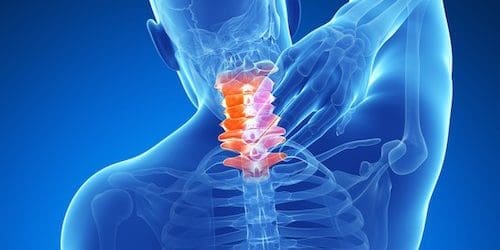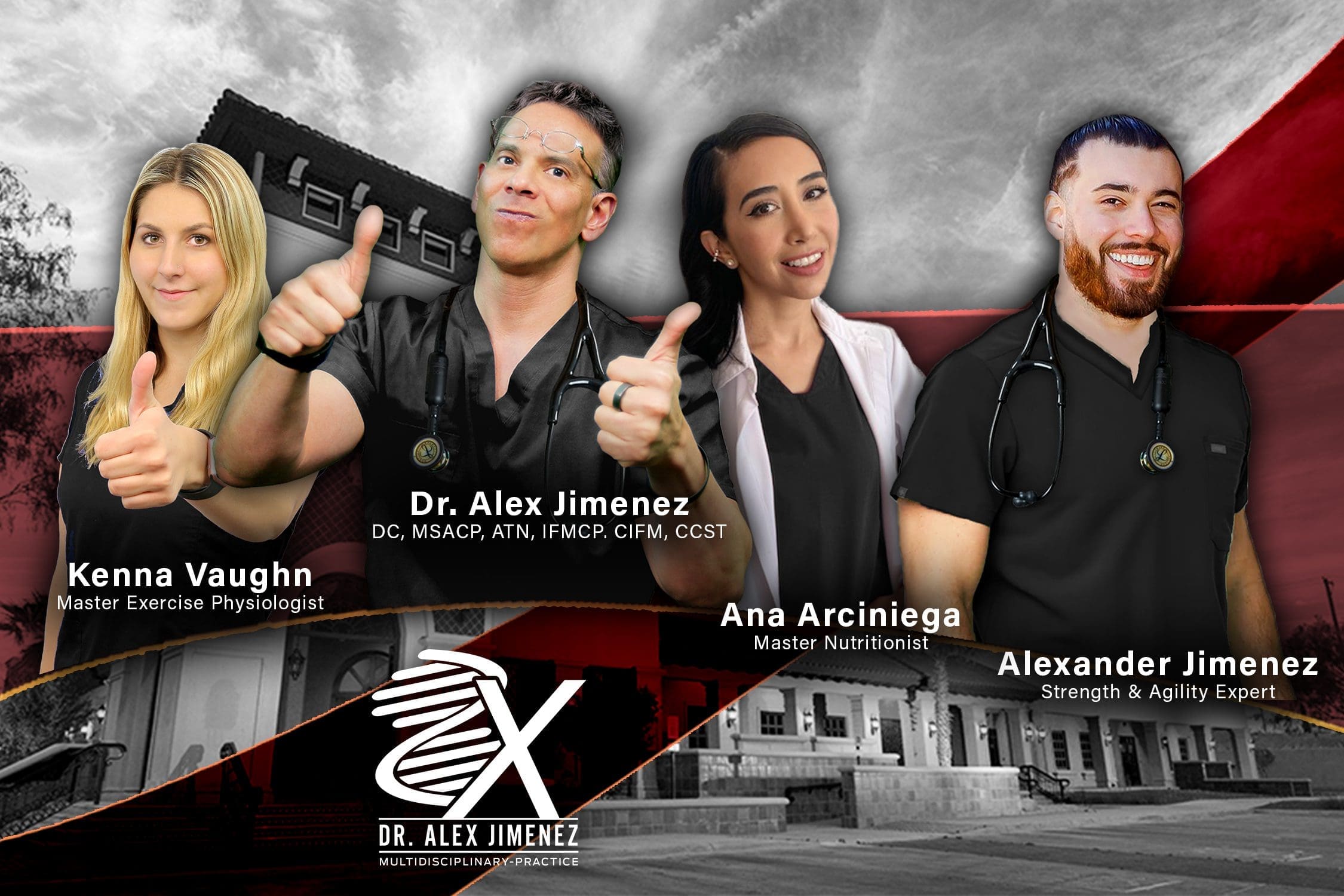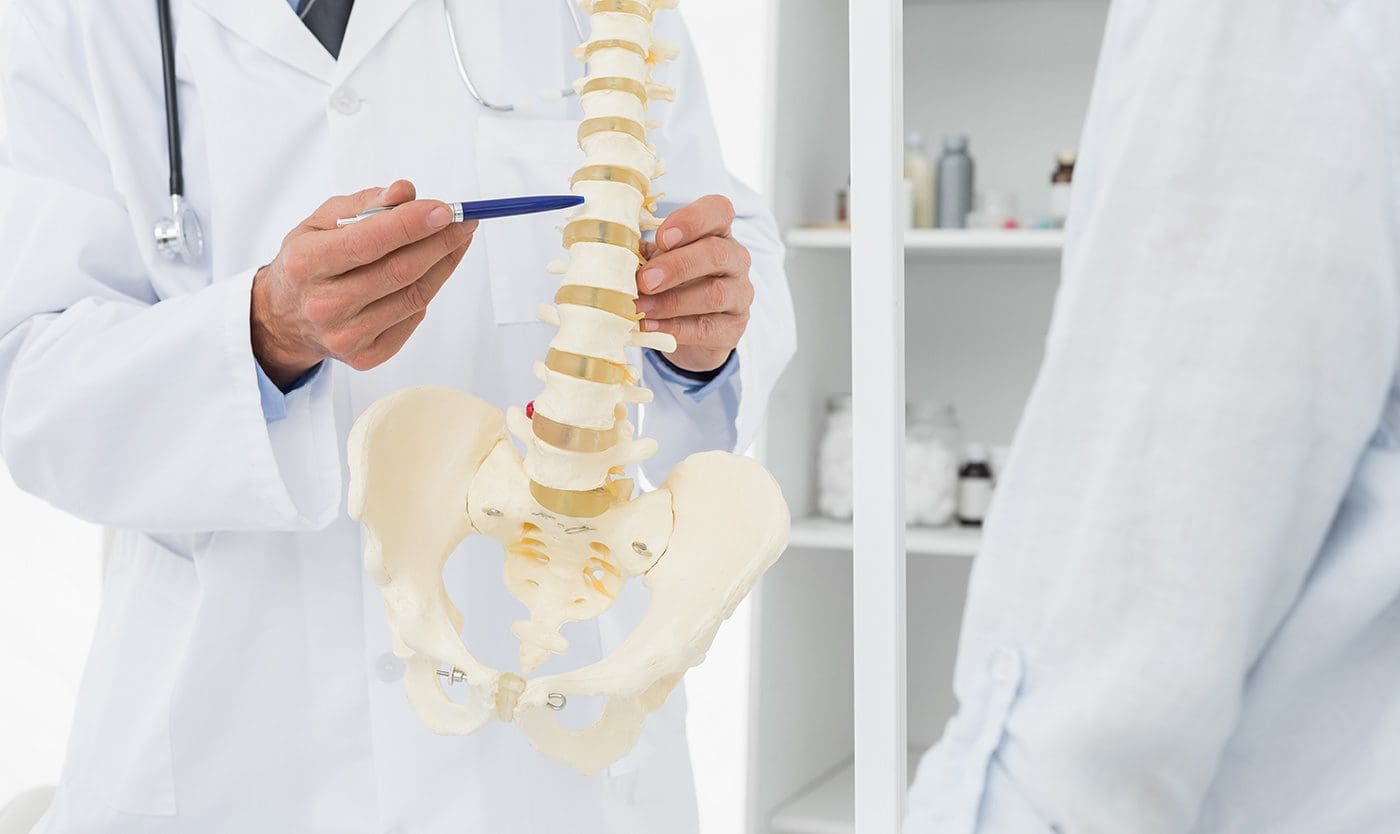Everyday Back Pain
The spine and back are made to provide a lot of strength, protecting the highly sensitive spinal cord and nerve roots, yet they are flexible, providing for freedom in all directions. But, there are many distinct parts of the spine that can create back pain, such as irritation to the large nerve roots that run down the arms and legs, irritation to little nerves within the spine, and strains to the large back muscles, as well as any injury to the disk, bones, joints, or ligaments in the spine.
Acute back pain comes on suddenly and usually lasts from a few days to a couple of weeks. Chronic back pain is typically described as lasting over three months.
A variety of symptoms:
- The pain may be constant, intermittent, or just occur with certain positions or actions
- The pain may stay in one place or radiate to other areas
- It may be a dull ache, or a sharp, piercing, or burning sensation
- The issue might be in the neck or low back but may radiate into the foot or leg (sciatica), hand, or arm.
Fortunately, most kinds of back pain get better on their own: roughly 50% of individuals may experience back pain relief within two weeks and 90% within three months.
If the pain lasts for a few days, gets worse, and does not respond to back pain remedies such as rest, using heat or ice, back pain exercises, and over-the-counter pain relievers, then it is usually a beneficial idea to see a back doctor. There are two cases in which emergency medical care is needed:
- Bowel and/or bladder dysfunction
Fortunately, these conditions are rare.
Back Diagnosis: Pain
Diagnostic tests may indicate if a patient’s back pain is a result of an anatomic cause. However, because diagnostic evaluations in and of themselves aren’t a diagnosis, arriving at an accurate clinical diagnosis requires that any evaluation be correlated with the patient’s back pain symptoms and physical exam.
- X-ray. This test offers information about the bones in the spine. An X-ray is frequently used to assess for spinal instability (such as spondylolisthesis), tumors, and fractures.
- CT scan. This test is a very detailed X-ray that includes cross-sectional images. CT scans provide details regarding the bones in the spine. They may also be used to test for particular conditions, such as a herniated disc or spinal stenosis. CT scans tend to be less accurate for spinal disorders than MRI scans.
- An MRI scan is particularly useful to evaluate certain conditions by providing details of the intervertebral disk and nerve roots (which may be irritated or pinched). MRI scans are used to rule out spinal infections or tumors.
Injections may also be used to help diagnose specific types of pain. If an injection of a pain-relieving medication into a certain area in the backbone supplies back pain relief, then it affirms that’s the area causing pain.
Back Pain: Causes
By far the most frequent cause of lower back pain is a muscle strain or other soft tissue damage. Although this condition is not life-threatening, it can cause significant pain. Typically, lower back pain from a muscle strain will probably get better over a few weeks.
Treatment generally involves a short period of rest, activity restriction, use of hot packs or cold packs, and pain medications. Over-the-counter pain drugs used to treat muscle strain may include acetaminophen (e.g., Tylenol), ibuprofen (Advil), Motrin, or naproxen (e.g., Aleve). Prescription pain medications may be recommended for severe back pain.
Typically, younger people (30 to 60 year olds) are more likely to experience back pain from the disc space itself (e.g., lumbar disc herniation or degenerative disk disease). Older adults (e.g., over 60) are more likely to suffer from pain linked to joint degeneration (e.g., osteoarthritis, spinal stenosis).
Sometimes, a patient may experience more noticeable leg pain rather than back pain as a result of certain conditions in the lower spine, including:
- Lumbar Herniated Disc: The interior core of the disc may protrude and irritate a nearby nerve root, causing sciatica (leg pain).
- This condition is known as lumbar spinal stenosis. The spinal canal narrows because of degeneration, which may put pressure on the nerve root and lead to sciatica.
- The condition is known as degenerative disc disease. As the disc degenerates, it can allow small amounts of motion in that segment of the spine and irritate a nerve root, leading to sciatica.
- Isthmic spondylolisthesis. A small stress fracture allows one vertebra to slip forward on another, usually at the base of the spine. The movement can pinch the nerve, causing lower back pain and leg pain.
- Osteoarthritis. Degeneration of the small facet joints at the back of the spine can lead to back pain and decreased flexibility. Spinal stenosis and nerve pinching may also ensue from this condition.
Understanding the underlying condition causing back pain is important, as remedies often differ based on the specific causes of the pain.
Risk Factors For Back Pain
There are many risk factors for back pain, including aging, genetics, occupational hazards, lifestyle, weight, posture, smoking, and pregnancy. That said, back pain is so common that it can happen even if you have no risk factors.
Patients with one or more of these factors might be at risk for back pain:
- Aging. Over time, wear and tear on the spine can lead to conditions (e.g., disk degeneration, spinal stenosis) that produce back and neck pain. Individuals aged 30 to 60 are more likely to have disc-related ailments, while individuals over age 60 are more likely to have pain associated with osteoarthritis.
- Genetics. There is some evidence that certain types of spinal disorders have a genetic component. For instance, degenerative disc disease seems to have an inherited component.
- Occupational hazards. Any job that needs repetitive bending and lifting has a higher incidence of back injury (e.g., construction worker, nurse). Jobs that require long hours of standing with no break (e.g., barber) or sitting in a seat (e.g., software programmer) that does not support the spine well put the person at greater risk.
- Sedentary lifestyle. Lack of regular exercise increases the risk of lower back pain and also increases its severity.
- Weight. Being overweight increases strain on the lower back, in addition to other joints (e.g., knees), and is a risk factor for certain types of back pain symptoms.
- Negative posture. Any type of poor posture, prolonged over time, creates a risk for back pain. Examples include slouching over a computer keyboard, driving hunched over a steering wheel, and lifting improperly.
- Pregnancy. Pregnant women are more likely to develop back pain due to carrying excess body weight in the front and the loosening of ligaments in the pelvic area as the body prepares for delivery.
- Smoking. People who smoke are more likely to develop back pain than people who don’t.
Time To Call A Back Pain Doctor
Generally, when the pain has any of the following characteristics, it’s a beneficial idea to visit a doctor for an evaluation:
- Back pain that follows an accident, such as a car accident or falling from a ladder
- The back pain is ongoing and is becoming worse
- The pain continues for more than four to six weeks
- The pain is severe and does not improve after a few days of typical remedies, such as rest, ice, and pain relievers (such as Ibuprofen or Tylenol)
- Severe pain during the night that wakes you up, even from a deep sleep
- There’s back and abdominal pain
- Numbness or altered feelings in the upper inner thighs, buttocks, or groin area
- Neurological symptoms, like weakness, numbness, or tingling in the extremities (leg, foot, arm, or hand),
- Unexplained fever with increasing back pain
- Sudden upper back pain, especially if you are at risk for osteoporosis, should be taken seriously.
The bottom line that everyone should remember is that if a person is in doubt, consult a physician. If back pain gets worse over time, doesn’t get better with rest and over-the-counter pain remedies, or entails neurological symptoms, then it’s a good idea to see a back pain doctor.
Upper/Middle Pain
 Pain in the upper and mid back is not as common as lower back or neck pain. The upper back is called the thoracic spinal column, and it is the most secure part of the spine. The reach of movement in the upper back is limited because of the backbone’s attachments to the ribs (rib cage).
Pain in the upper and mid back is not as common as lower back or neck pain. The upper back is called the thoracic spinal column, and it is the most secure part of the spine. The reach of movement in the upper back is limited because of the backbone’s attachments to the ribs (rib cage).
Upper back pain is generally caused by soft tissue injuries, like sprains or strains, muscle tension caused by poor posture, or looking downward for long periods (e.g., texting, mobile phone use).
- Pain
- Tightness
- Stiffness
- Muscle spasm
- Tenderness to touch
- Headache
Causes Middle/Upper Pain?
An episode of upper back pain can be triggered by distinct moves and actions, including:
 Twisting
Twisting- Excessive bending
- Whiplash or alternative neck injury
- Lifting improperly
- Poor muscle tone
- Persistent movements, overuse
- Contact sports
- Carrying a load that is heavy
- Smoking
- Being overweight
Poor posture while working at the computer for a long time without taking a break to walk around and stretch, or in general, can promote upper back pain. Both muscle fatigue and muscle pull, which often result from poor posture, can trigger the pain.
What To Do About It?
Usually, upper back pain is not a cause for worry; however, it can be uncomfortable, painful, and inconvenient. Additionally, if the pain develops suddenly and is severe, such as from an injury (e.g., a fall), or if the pain and symptoms (e.g., weakness) progressively worsen, you should seek medical attention.
Generally, the following home treatments can help relieve upper back pain.
- Short-term rest
- Mild Stretches
- Use over-the-counter medications such as ibuprofen (Motrin®), naproxen sodium (Aleve®), or acetaminophen (Tylenol®). Take with food, and don’t take more than the recommended dose.
- Use a commercially available cold pack, or fill a plastic bag with ice and seal it. Wrap it. Apply it to the painful area for 20 minutes every 2–3 hours for the first 2–3 days.
- Heat (after the very first 72 hours). After using moist heat, gently stretch the muscles to enhance mobility and alleviate stiffness.
Your physician may prescribe drugs, like a muscle relaxant, or perform trigger point injections to greatly help break up muscle spasms. He or she may also recommend physical therapy to increase flexibility and mobility and alleviate pain. Other treatments your doctor may suggest include acupuncture and chiropractic care.
Most cases of upper back pain resolve in 1 to 2 weeks without additional treatment. When you’re able to perform them without pain, restart your regular activities slowly. Don’t rush matters, however: you could interfere with your healing and risk re-injury.
Lower Back Pain

Low and lower back pain can differ from dull pain, which develops gradually, to sudden, sharp, or persistent pain felt in the lower back. Regrettably, almost everyone, at some point during life, may experience low back pain that may travel downward into the buttocks and sometimes into one or both lower extremities. The most common cause is muscle strain, often linked to heavy physical labor, lifting or forceful movement, bending or twisting to awkward positions, or standing in one position too long.
Other Causes Of Low And Lower Back Pain
There are several different conditions that cause or lead to low and lower back pain. Many involve nerve compression (e.g., pinched nerve) that can cause pain and other ailments. Kinds of spinal disorders include trauma-related and degenerative diseases, meaning age-related. A few of these spinal problems are given below.
- A disc may bulge or herniate. A disk may bulge outward. A herniated disc occurs when the soft inside matter escapes through a crack or ruptures through the disk’s protective outer layer. Both disc problems can lead to nerve compression, inflammation, and pain.
- Spinal stenosis develops when the spinal canal or a nerve passageway abnormally narrows.
- Spinal arthritis, also called spinal osteoarthritis or spondylosis, is a common degenerative spine problem. It affects the spine’s facet joints and may contribute to the development of bone spurs.
- Spondylolisthesis occurs when a lumbar (low back) vertebral body slips forward over the vertebra below it.
- Vertebral fractures (burst or compression types) are often caused by some type of injury (e.g., a fall).
- Osteomyelitis is a bacterial infection that may develop in one of the spine’s bones.
- Spinal tumors are an abnormal growth of cells (a mass) and are recognized as benign (non-cancerous) or malignant (cancerous).
Home Treatments
If you have recently injured your low or lower back, here are some things you can do.
- Ice then heat
During the first 24 to 48 hours, use ice wrapped in a towel or cloth. Ice will help to reduce swelling, muscle spasms, and pain. Thereafter, switch to heat. Heat helps warm and relax sore tissues.
Caution: Never use a cold or heat source directly on skin; always wrap it in something.
- Over-the-counter medications
Tylenol or Advil, taken according to package instructions, may help reduce inflammation and pain. - Take it easy
While days of bed rest are no longer recommended, you might have to modify your everyday routine to give your lower back the opportunity to recuperate.
When To Seek Medical Attention
Low back pain is, or becomes severe and persistent
- Low back pain is, or becomes severe and persistent
- Doesn’t subside after a few days
- Interferes with sleep and daily tasks
The symptoms listed below always require immediate medical care:
- Groin or leg weakness or numbness


 Twisting
Twisting